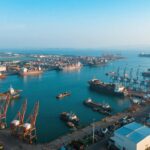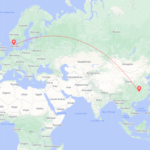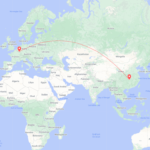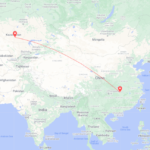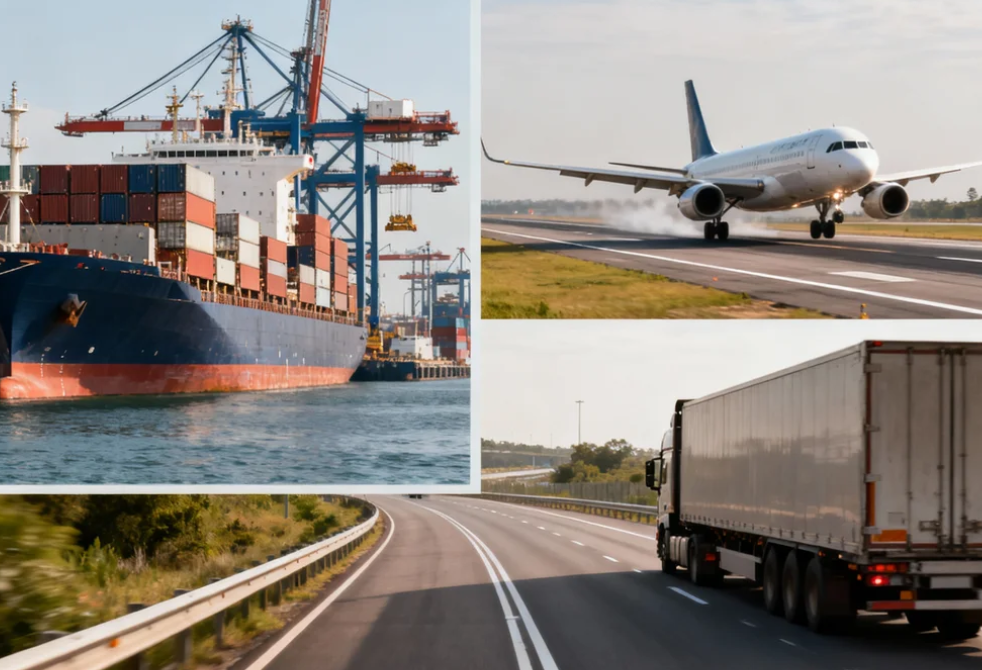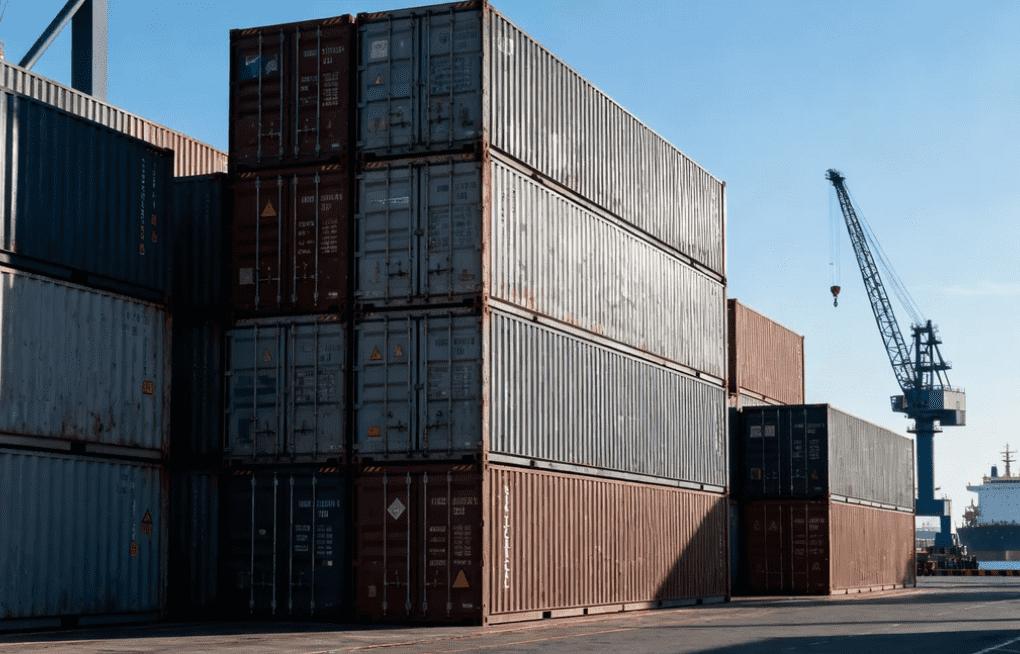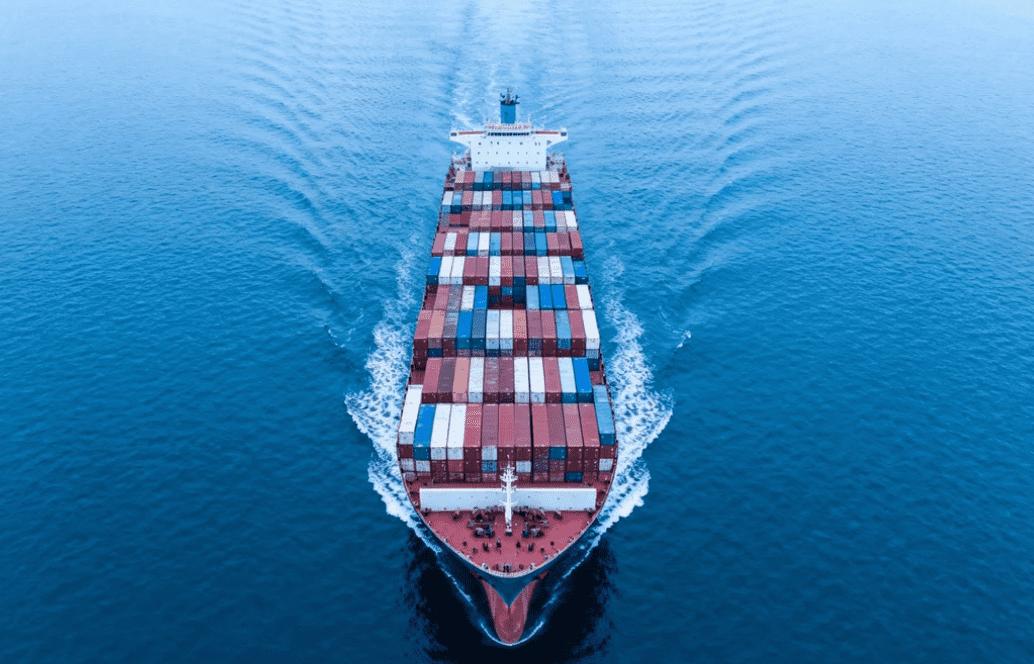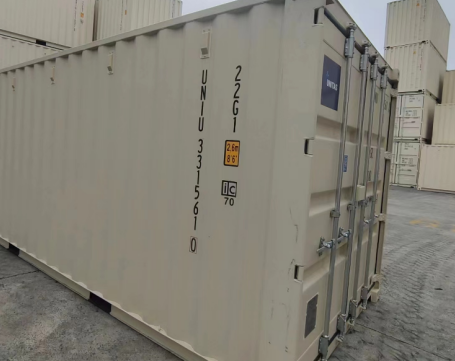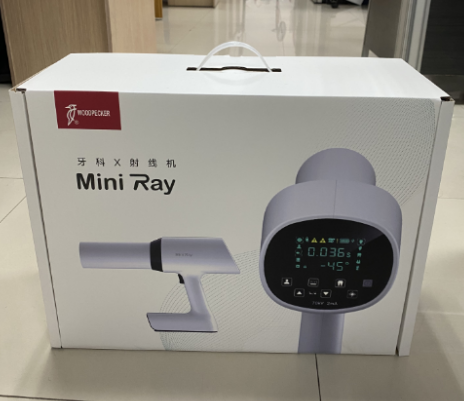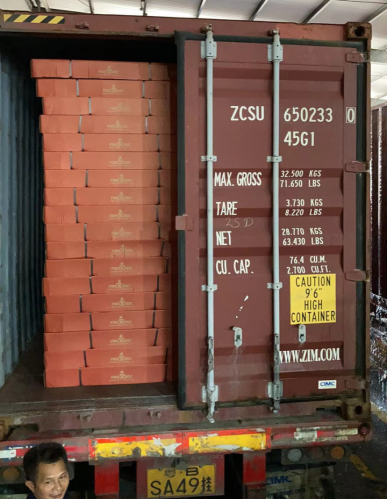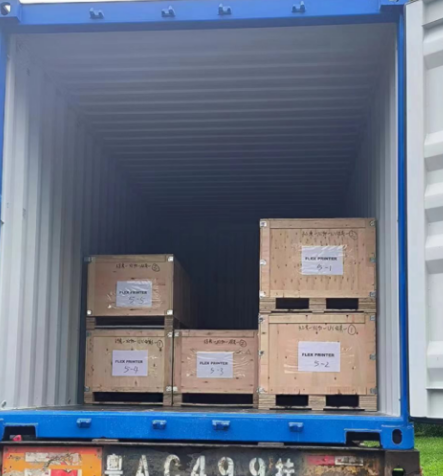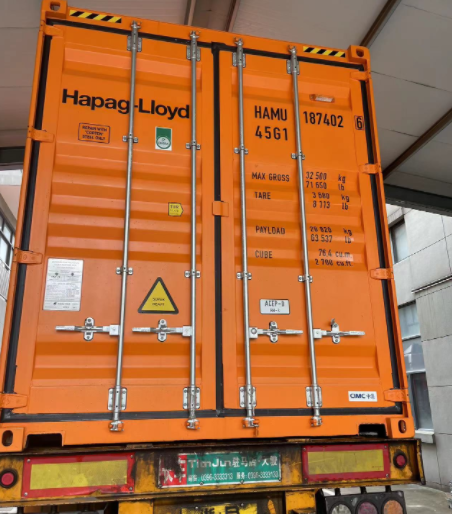Are you curious about the cost of shipping a 40-foot container from China to the USA?
Understanding the intricacies of shipping costs can be daunting, but it’s essential for anyone involved in international trade. In this comprehensive guide, we will explore the various factors influencing shipping costs, breakdown these expenses, and provide insights on how to choose the right shipping method and freight forwarder. Get ready to navigate the complexities of shipping and discover tips for reducing your costs effectively!
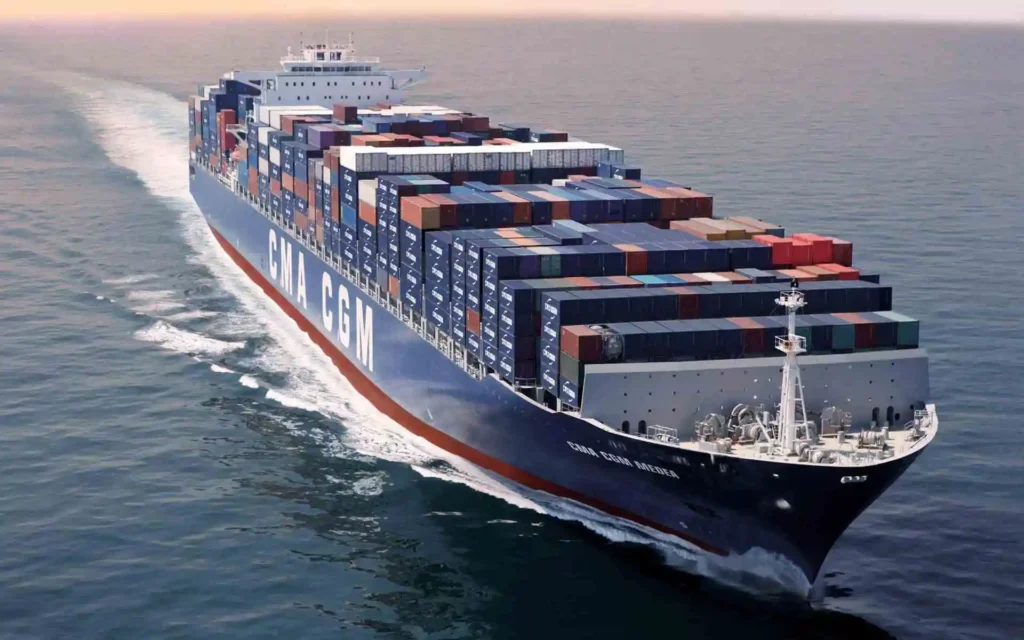
Understanding the Cost of Shipping a 40-Foot Container from China to the USA
Shipping a 40-foot container from China to the USA involves various costs that are crucial for businesses and traders to understand. The overall expense encompasses not only the freight charges but also extra fees that can significantly impact the total shipping cost.
Factors Influencing Shipping Costs
Several key factors influence the shipping costs for a 40-foot container:
- Distance and Route: The specific route taken affects fuel consumption and transit time. Shipping from Shanghai to Los Angeles, for instance, may differ in cost compared to shipping from Shenzhen to New York due to varying distances and port fees.
- Freight Method: The choice between Ocean Freight, Air Freight, or Rail Freight plays a major role in determining the cost. Generally, ocean freight is more economical for transporting large volumes of goods, while air freight tends to be significantly more expensive.
- Supply and Demand: Fluctuations in demand for shipping space, particularly during peak seasons (like pre-holiday periods), can drive rates up. Understanding market trends can help businesses anticipate cost changes.
- Type of Goods: The nature of the goods being shipped can also impact costs. For example, hazardous materials require special handling and incur additional fees.
- Freight Forwarder Charges: Different freight forwarders may charge varying fees based on their service levels and operational efficiencies. It’s essential to select a reputable provider, such as Dantful International Logistics, which offers a comprehensive suite of services while keeping costs competitive.
- Insurance and Security Fees: Protecting your cargo through insurance is advisable, particularly for high-value items. The cost of insurance can vary based on the type of goods and their estimated value.
Seasonal Variations and Their Impact on Rates
The shipping industry experiences seasonal fluctuations that can significantly affect the cost of transporting a 40-foot container. During peak seasons, such as the holiday period or major sales events in the USA, demand for shipping space increases, often resulting in higher freight rates.
- Peak Season: Typically observed between August and December, this period sees a surge in demand as retailers stock up for the holiday rush. Rates can increase by as much as 20-30% during this time compared to off-peak seasons.
- Off-Peak Season: From January to July, the demand decreases, leading to more competitive rates. Shipping costs may drop, and freight forwarders often offer discounts to attract business.
Understanding these seasonal trends can be advantageous for businesses planning shipments. By avoiding peak season shipping, companies can take advantage of lower rates and reduced congestion at ports.
Breakdown of Shipping Costs for a 40-Foot Container
To give a clearer picture of what to expect when shipping a 40-foot container, here’s a breakdown of the associated costs:
Freight Charges Explained
Freight charges are the primary cost associated with shipping a 40-foot container. This charge is generally calculated based on:
- Base Rate: The initial cost set by shipping lines, which varies depending on the shipping route and demand.
- Bunker Adjustment Factor (BAF): This fee accounts for fluctuations in fuel prices and can change frequently.
- Currency Adjustment Factor (CAF): This accounts for currency fluctuations when converting charges to the local currency.
To provide an overview, here’s a sample freight cost comparison for shipping a 40-foot container from various major ports in China to selected ports in the USA:
| Departure Port (China) | Arrival Port (USA) | Estimated Freight Cost (USD) | Transit Time |
|---|---|---|---|
| Shanghai | Los Angeles | $2,500 – $3,000 | 15 – 20 days |
| Shenzhen | New York | $2,800 – $3,200 | 18 – 25 days |
| Ningbo | Chicago | $2,700 – $3,100 | 16 – 22 days |
| Guangzhou | San Francisco | $2,600 – $3,000 | 17 – 23 days |
Additional Fees to Consider
In addition to freight charges, several additional fees can increase the overall shipping cost:
- Terminal Handling Charges (THC): Fees charged by the port for loading and unloading containers.
- Customs Clearance Fees: Costs incurred for processing the shipment through customs, essential for ensuring compliance with both US and Chinese regulations.
- Demurrage and Detention Fees: Charges incurred when containers are held at the port beyond the allotted time.
- Import Taxes and Duties: Fees imposed by the US government on imported goods, which vary based on the type of products shipped.
By understanding these costs, businesses can better budget for their shipments and avoid unexpected expenses. Partnering with a knowledgeable freight forwarder like Dantful International Logistics can help navigate these complexities and ensure a smooth shipping experience. For more insights on specific shipping routes, you can also refer to Shipping From China to USA.
Choosing the Right Shipping Method for a 40-Foot Container
When shipping a 40-foot container from China to the USA, choosing the right shipping method is crucial for balancing cost, efficiency, and delivery time. The two primary methods for shipping goods internationally are Full Container Load (FCL) and Less than Container Load (LCL).
Comparing Full Container Load (FCL) vs. Less than Container Load (LCL)
| Shipping Method | Description | Advantages | Disadvantages |
|---|---|---|---|
| Full Container Load (FCL) | Entire container is used for a single shipment. | – Lower cost per unit if shipping large volumes. <br>- Faster transit times as there is less handling. <br>- Reduced risk of damage due to fewer transfers. | – Higher upfront cost if not shipping enough goods to fill a container. |
| Less than Container Load (LCL) | Multiple shipments from different customers are consolidated in one container. | – More economical for smaller shipments. <br>- Flexibility in shipping smaller quantities. | – Higher cost per unit compared to FCL. <br>- Longer transit times due to additional handling and transfers. |
From the table, it’s clear that FCL is more cost-effective when shipping larger volumes, while LCL is suitable for smaller shipments that do not fill a container. However, if you are frequently importing goods, FCL may offer better value in the long run.
The Role of Shipping Lines in Cost Determination
Shipping lines are critical players in determining the overall cost of shipping a 40-foot container. They set the base freight charges, which can vary significantly based on several factors:
- Route: Different shipping routes have different demand levels, affecting pricing. Popular routes might have lower costs due to competition, while less frequented routes may have higher prices.
- Vessel Capacity: When vessel capacity is low and demand is high, shipping lines may raise their rates. Conversely, when supply exceeds demand, shipping lines may lower rates to attract more cargo.
- Fuel Prices: Fluctuations in fuel prices directly impact shipping costs as they are a significant component of operational expenses for shipping lines.
- Seasonal Demand: Peak seasons, such as the holiday shopping period, can lead to higher rates due to increased demand on shipping capacity.
At Dantful International Logistics, we work with reliable shipping lines to provide competitive rates for both FCL and LCL shipments, ensuring you get the best options based on your shipping needs.
READ MORE:
- Shipping From China to the USA
- Shipping From China TO Canada
- Shipping From China TO Mexico
- Shipping From China to Panama
- Shipping From China to Costa Rica
- Shipping From China to Brazil
- Shipping From China TO Colombia
- Shipping From China to Jamaica
- Shipping From China to Venezuela
- Shipping From China to Argentina
Choosing the Right Freight Forwarder from China to the USA
Selecting an experienced and reputable freight forwarder is essential for a seamless shipping experience. A good freight forwarder will not only handle the logistics of transporting your 40-foot container, but they will also assist with customs clearance, provide insurance options, and offer guidance on the necessary documentation.
Key Considerations When Choosing a Freight Forwarder:
- Experience and Reputation: Look for a freight forwarder like Dantful International Logistics, known for providing high-quality services and a strong network in both China and the USA.
- Services Offered: Ensure the forwarder provides a range of services, including ocean freight, air freight, customs clearance, and warehouse solutions. This comprehensive service can save you time and money.
- Price Transparency: A trustworthy freight forwarder will provide clear quotes without hidden fees, helping you budget accurately for your shipping needs.
- Customer Support: Responsive and knowledgeable customer service is crucial, especially if issues arise during transit. A good freight forwarder will keep you informed throughout the shipping process.
- Technology Utilization: Look for forwarders that utilize tracking technology to provide real-time updates on your shipment status, ensuring peace of mind.
By carefully selecting a freight forwarder and choosing the right shipping method, you can optimize your shipping experience and control costs while importing goods from China to the USA.
Customs Duties and Taxes on Imported Goods
Understanding Customs Clearance Fees
When importing a 40-foot container from China to the USA, it is essential to understand the various customs clearance fees involved. These fees are charged by the U.S. Customs and Border Protection (CBP) and are essential for the legal entry of goods into the country. The customs clearance process can be complex, involving several steps, such as documentation, inspections, and duties assessment.
- Documentation Fees: Importers are required to submit specific documents, including the bill of lading, commercial invoice, and packing list. Any errors or omissions in these documents can lead to delays or additional fees.
- Customs Broker Fees: Many importers hire a customs broker to facilitate the clearance process. Brokers charge a fee that usually ranges from $100 to $300, depending on the complexity of the shipment and the services provided.
- Inspection Fees: CBP may inspect containers for compliance with U.S. laws and regulations. If a container is chosen for inspection, additional fees may apply to cover the costs associated with this process.
- Bond Fees: Importers may need to post a customs bond, which acts as insurance for the government to cover potential duties and taxes that could arise from the import. The cost of the bond typically starts at around $100.
Understanding these fees helps importers budget accurately for the total cost of shipping, ensuring that there are no surprises when the container arrives in the USA.
Calculating Import Taxes on 40-Foot Container Shipments
Calculating the total import taxes on a 40-foot container involves understanding the Harmonized System (HS) codes that classify the imported products and determining the applicable duty rates. Here’s how to calculate:
- Determine the Total Value: First, calculate the Total Value of the goods being imported, which includes the cost of the goods, freight, and insurance. This is often referred to as the “Customs Value.”
- Identify the Duty Rate: Every product has an assigned duty rate based on its HS code. Importers can check the U.S. Harmonized Tariff Schedule to find the specific duty rate for their goods. Duty rates can vary significantly, typically ranging from 0% to over 25%.
- Calculate the Duty: The import duty is calculated by multiplying the Customs Value by the applicable duty rate. For example, if a 40-foot container with goods valued at $20,000 has a duty rate of 10%, the duty would be $2,000.
- Other Taxes: In addition to duty, importers may be subject to other taxes, such as Merchandise Processing Fees (MPF) and Harbor Maintenance Fees (HMF), which add to the overall cost.
By accurately calculating these taxes, importers can better prepare for the financial impact of bringing goods into the U.S.
Tips for Reducing the Cost of Shipping from China to the USA
Negotiating Shipping Rates with Freight Forwarders
One of the most effective ways to reduce shipping costs is by negotiating shipping rates with your freight forwarder. Here are some tips for successful negotiations:
- Research Market Rates: Before approaching a freight forwarder, research current market rates for shipping 40-foot containers. Having this information will empower you during negotiations.
- Establish a Relationship: Building a long-term relationship with a freight forwarder can lead to better rates and services. Freight forwarders value loyal customers and may offer discounts or more favorable terms.
- Be Flexible with Shipping Dates: If you can be flexible with your shipping schedule, it may allow your freight forwarder to consolidate shipments and offer lower rates.
- Consider Multiple Quotes: Obtain quotes from multiple freight forwarders to compare prices and services. Use this information to negotiate better rates with your preferred forwarder.
Optimizing Container Space for Cost Efficiency
Efficiently utilizing the space in a 40-foot container can significantly reduce shipping costs. Here are some strategies:
- Maximize Load Capacity: Ensure that you are maximizing the weight and volume limits of the container. A 40-foot container can typically hold around 28,000 kg (61,729 lbs) and has a volume capacity of about 67 cubic meters (2,367 cubic feet).
- Proper Packaging: Use appropriate packaging materials that minimize wasted space. For example, stackable crates and flat-pack items can help utilize vertical space in the container.
- Consolidate Shipments: If you have multiple items to ship, consider consolidating them into a single shipment. This can be more cost-effective than sending several smaller shipments.
- Regular Communication with Suppliers: Maintain regular communication with your suppliers to ensure that they are aware of the loading specifications and can prepare goods accordingly.
By implementing these tips, importers can effectively manage their shipping costs, leading to more profitable international trading operations. At Dantful International Logistics, we provide comprehensive services, including ocean freight, customs clearance, and insurance, helping you navigate the complexities of international shipping while keeping costs in check.

Young Chiu is a seasoned logistics expert with over 15 years of experience in international freight forwarding and supply chain management. As CEO of Dantful International Logistics, Young is dedicated to providing valuable insights and practical advice to businesses navigating the complexities of global shipping.






